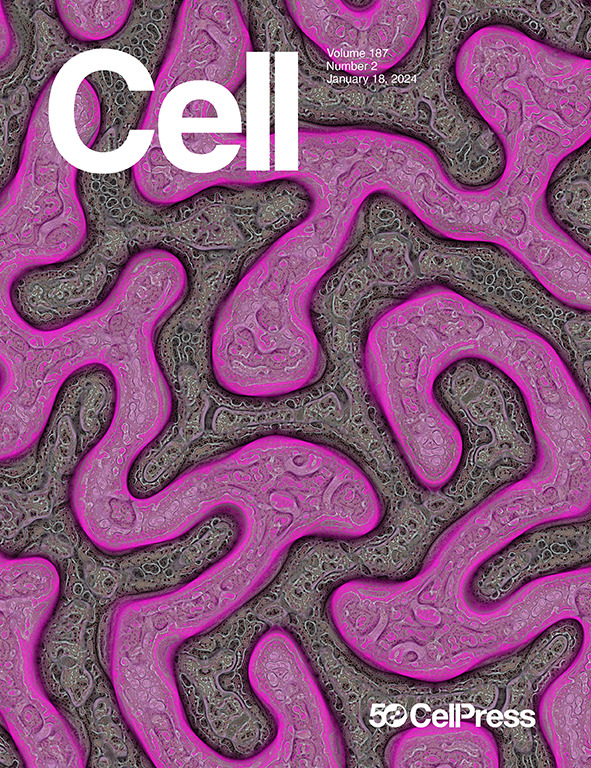A host organelle integrates stolen chloroplasts for animal photosynthesis
IF 45.5
1区 生物学
Q1 BIOCHEMISTRY & MOLECULAR BIOLOGY
引用次数: 0
Abstract
Eukaryotic life evolved over a billion years ago when ancient cells engulfed and integrated prokaryotes to become modern mitochondria and chloroplasts. Sacoglossan “solar-powered” sea slugs possess the ability to acquire organelles within a single lifetime by selectively retaining consumed chloroplasts that remain photosynthetically active for nearly a year. The mechanism for this “animal photosynthesis” remains unknown. Here, we discovered that foreign chloroplasts are housed within novel, host-derived organelles we term “kleptosomes.” Kleptosomes use ATP-sensitive ion channels to maintain a luminal environment that supports chloroplast photosynthesis and longevity. Upon slug starvation, kleptosomes digest stored chloroplasts for additional nutrients, thereby serving as a food source. We leveraged this discovery to find that organellar retention and digestion of photosynthetic cargo has convergently evolved in other photosynthetic animals, including corals and anemones. Thus, our study reveals mechanisms underlying the long-term acquisition and evolutionary incorporation of intracellular symbionts into organelles that support complex cellular function.

真核生物是在10亿多年前进化而来的,当时古老的细胞吞没并整合了原核生物,形成了现代的线粒体和叶绿体。Sacoglossan“太阳能”海蛞蝓有能力在一生中通过选择性地保留消耗的叶绿体来获得细胞器,这些叶绿体在近一年的时间里保持光合活性。这种“动物光合作用”的机制尚不清楚。在这里,我们发现外来叶绿体被安置在新的,宿主衍生的细胞器中,我们称之为“窃听器”。贼体利用atp敏感离子通道维持支持叶绿体光合作用和寿命的腔内环境。在蛞蝓饥饿时,窃食体消化储存的叶绿体以获得额外的营养,从而作为食物来源。我们利用这一发现发现,在其他光合作用动物中,包括珊瑚和海葵,光合作用货物的细胞器保留和消化已经趋同进化。因此,我们的研究揭示了细胞内共生体长期获取和进化结合到支持复杂细胞功能的细胞器中的机制。
本文章由计算机程序翻译,如有差异,请以英文原文为准。
求助全文
约1分钟内获得全文
求助全文
来源期刊

Cell
生物-生化与分子生物学
CiteScore
110.00
自引率
0.80%
发文量
396
审稿时长
2 months
期刊介绍:
Cells is an international, peer-reviewed, open access journal that focuses on cell biology, molecular biology, and biophysics. It is affiliated with several societies, including the Spanish Society for Biochemistry and Molecular Biology (SEBBM), Nordic Autophagy Society (NAS), Spanish Society of Hematology and Hemotherapy (SEHH), and Society for Regenerative Medicine (Russian Federation) (RPO).
The journal publishes research findings of significant importance in various areas of experimental biology, such as cell biology, molecular biology, neuroscience, immunology, virology, microbiology, cancer, human genetics, systems biology, signaling, and disease mechanisms and therapeutics. The primary criterion for considering papers is whether the results contribute to significant conceptual advances or raise thought-provoking questions and hypotheses related to interesting and important biological inquiries.
In addition to primary research articles presented in four formats, Cells also features review and opinion articles in its "leading edge" section, discussing recent research advancements and topics of interest to its wide readership.
 求助内容:
求助内容: 应助结果提醒方式:
应助结果提醒方式:


